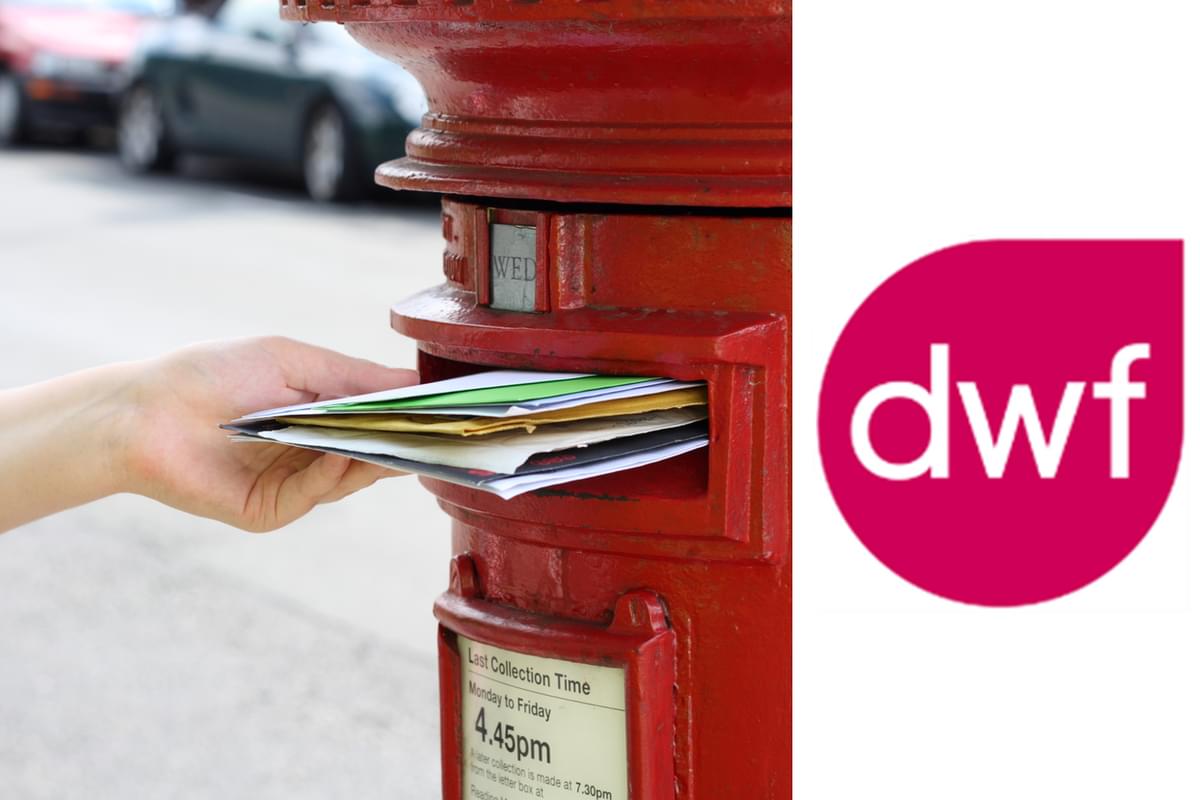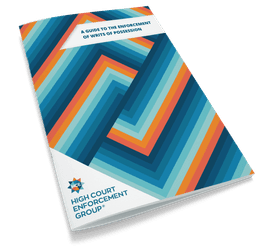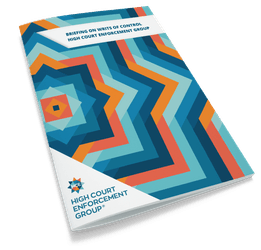The Pre-Action Protocol for Debt Claims

It may seem a little odd to consider pre-action conduct in a guest article for a High Court Enforcement Officer. A judgment or order has already been obtained and a "post-action" decision made on the method of enforcement, to apply for a writ of control and take control of goods to the value of the debt.
However, the Pre-Action Protocol for Debt Claims ("the PAP DC"), which comes into force on 1st October, represents a significant change in the pre-action process for creditors and will change how they should approach non-payment, from start to finish.
Debts from individuals
The PAP DC applies to any business, from sole traders to bodies corporate (including public bodies) when claiming payment of a debt from an individual (including a sole trader). This is a very broad body of creditors and a widening definition of debtors, as "individuals", including certain business entities – after all sole traders, for example, will have taken the conscious decision to run their own business as an individual and assume personally liability, rather than incorporating a private limited company to limit their liability. And, by extension, in unincorporated partnerships (generally made up of two or more individuals in business) the partners are often jointly and severally liable for any debts the business accrues, so may equally be aided by this regime.What a creditor should send
In debts where the PAP DC applies, before starting proceedings a creditor should send:- A Letter of Claim, including detailing the "basis of claim" and paying regard for rejecting any regular instalments being offered or paid; and enclose
- An up-to-date statement of account, with details of interest and any administrative or other charges;
- The prescribed Information Sheet and Reply Form from the Protocol, which ask what further documentation and information the debtor might want before they reply; and
- A financial statement form, the Standard Financial Statement being given as an example
A holistic or a hard business approach?
The aim of the PAP DC is clear: to have creditors take a "holistic approach" to debt recovery where an individual is liable, seeking to recover arrears through payment plans in all cases and avoiding court action whenever possible. To meet this aim, creditors will not only need to invest heavily in systems development to meet this aim but also in staff, to enable them to discover the circumstances of the individuals who fall into arrears and the reason for not paying their debts. It is with good reason that creditors in the commercial environment agree credit terms. Cash keeps business in business and if payment fails to materialise, this can put a creditor's own cash flow under pressure. If a customer fails to make contact or pay their account in a timely manner it is understandable why such creditors will want to treat their debtors with a "hard business approach", assuming that they are "won't pays" and rapidly escalating through pre-action, issue and judgment processes to get to the real "teeth" of the process: enforcement. For relationships where the purchaser and the supplier are each acting in the course of business, this is frustrating. Indeed, it is possible that this might well lead to a perverse situation where cases either settle because creditors do not have the energy or resources to pursue claims further or for no better reason than their being tired of waiting.Escalating more rapidly to enforcement
Firstly, it's important to note that the PAP DC applies to any business 'when claiming payment of a debt from an individual (including a sole trader)' and not business-to-business debts 'unless the debtor is a sole trader'. Following the letter and not the spirit of the PAP DC may make for a narrower class of debtor. Strict segmentation can then save on costs and delay against debtors outside of this class. Secondly, a creditor shouldn't see the Letter of Claim as the "last step" prior to commencing proceedings – there is nothing to prevent you following up on the Letter of Claim by letter, e-mail and telephone to ensure it has been safely received, for example. It would certainly be even more frustrating to issue a Claim, only to have it "stayed" for a perceived failure to comply with the PAP DC and then have to conduct the pre-action process afresh. For "eyes on the ground", a good High Court Enforcement Officer will be able to support you with a field attendance. Their agents are able to give an expert view as to a debtor's situation, imparting valuable insight as to whether enforcement is likely to effect a recovery ultimately. Indeed, they may even be able to collect payment. We have certainly seen a benefit to this approach, with HCE Group's support. Thirdly, it's still important to keep focussed on enforcement from the outset: in the commercial environment, this might include machinery, plant, property and stock; and in both the commercial and consumer environment the most obvious tangible asset will be vehicles.Compliance with the Pre-Action Protocol for Debt Claims
The Court is not likely to be concerned with non-compliance with the PAP DC in matters that are escalated more quickly due to urgency and the example given in the Protocol is in respect of the limitation period expiring – however, the Court may well also be concerned with instances where it is likely that goods of the debtor will be moved or otherwise disposed of, in order to avoid an enforcement agent taking control of the goods at a later stage. This would certainly mirror the ability for creditors seeking to take control of goods, who may then apply under regulation 6(3) of the Taking Control of Goods Regulations for an order for a shorter notice period than the minimum period that would otherwise be allowed. Finally, when it comes to debts exceeding the "bankruptcy level" of £5,000, individual insolvency may well have a role to play. Per Mr Justice Field in Gulf International Bank v Al Ittefaq Steel Products Co & Ors [2010] EWHC 2601 (QB) (20 September 2010): 'In my opinion, Akenhead J's observation that inability to pay will usually not justify a pre-execution extension of time, with an insolvent debtor having to take the usual consequences of his or its insolvency, applies a fortiori where the parties are business entities.' Even where creditors choose to approach the PAP DC strictly and take a more "holistic approach" to debt recovery, following the spirit of the Protocol, the jury remains out as to whether there will be a significant impact on the number of cases that proceed to claim. The latest quarterly civil justice statistics were released on Thursday 7th September 2017 and indicate that:- County Court Claims are up 40% compared to the same quarter in 2016, driven by "specified money claims";
- Judgments are up 43% on the same quarter in 2016, of which 87% were "default judgments", i.e. where a defendant has failed to respond to the court issued Claim Form; and
- The second largest type of judgments, "admissions", account for 8% of all judgments
The potential impact
The only other indication for how the defaulting class of debtors may respond comes from the introduction of the Notice of Enforcement for High Court Enforcement Officers in 2014. I understand that industry data indicates that compliance from debtors in response to this Notice now stands at c.8% - however, debtors will be used to receiving Letters Before Claim already and I think it unlikely that a Letter of Claim with enclosures running to c.13 pages in length will have any significantly improved rate of response. It may be, then, that the PAP DC will merely encourage earlier engagement from those who would otherwise admit their debts and seek time to pay through the Court process – the 8%. Worse though, there remains scope for deliberate tactics being adopted by "professional debtors", who do not intend to repay their debts, even after a judgment has been entered against them. All this at a time when Lord Justice Briggs's "Online Court" is in development for 'straightforward and modest value disputes', in specified (i.e. debt) claims up to £25,000. When it comes to that, Lord Justice Briggs does 'not regard the erection of a pre-action protocol procedure as at all suitable …. At most it might recommend a simple exchange of correspondence'!Article author
Jeffersen Gledhill is Legal Recoveries & Operations Manager for DWF LLP one of the UK’s largest law firms and has an award-winning reputation for client service excellence, effective operational management and innovation. Jeffersen has spoken and written extensively about the Pre-Action Protocol for Debt Claims and many other issues relating to debt recovery, enforcement and insolvency. Following on from hosting a very successful series of seminars and webinars to raise corporate awareness about the Pre-Action Protocol for Debt Claims, including as Legal Partner to the CICM, Jeffersen presented to HCE Group at our Client Services meeting on 24th August 2017. Following this event, we invited him to write this article. Jeffersen.gledhill@dwf.law


